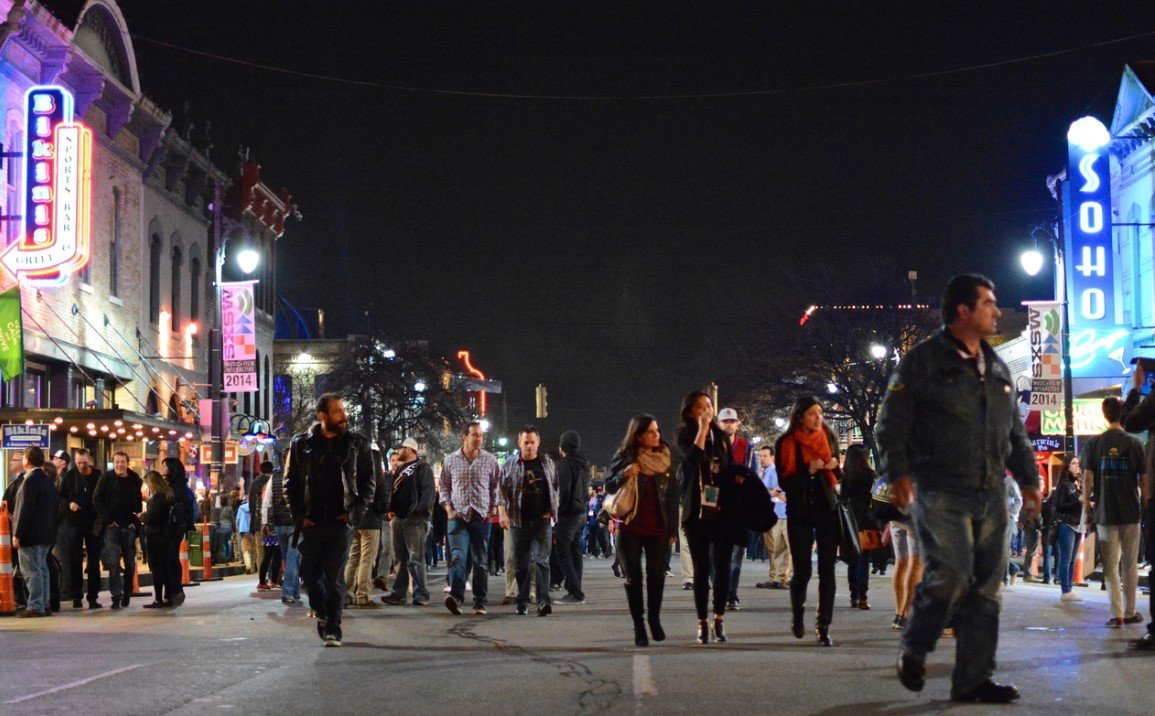Ever wondered which cities in the US offer the best walking experiences in many neighborhoods? From vibrant neighborhoods to scenic paths, exploring on foot can unveil hidden gems in walkable parts. Discovering the most walkable cities in the US, including many neighborhoods, might just spark your next adventure. Ready to lace up and hit those pedestrian-friendly streets? Whether you seek bustling urban landscapes for a stroll or tranquil parks to walk, these cities cater to all types of pedestrians. Let’s stroll into a journey where every step reveals something new.

Importance of Walkability in Urban Areas
Promoting Healthier Lifestyles
Most walkable cities in the US play a crucial role in encouraging physical activity. When cities are designed for pedestrians, people tend to walk more, leading to healthier lifestyles. This increased foot traffic not only benefits individuals by promoting exercise but also contributes to reducing obesity rates.
Creating an environment that prioritizes walking over driving helps decrease the reliance on cars by promoting a stroll-friendly atmosphere. By fostering walkable cities, communities can significantly lower carbon emissions by promoting strolls. Less dependency on vehicles means less pollution and a healthier environment for everyone to enjoy. For instance, New York City’s extensive network of sidewalks and pedestrian-friendly streets encourages residents to walk instead of drive or use public transport.
Enhancing Social Interaction
Accessible pedestrian infrastructure is key in enhancing social interaction within urban areas. In most walkable cities, parks, plazas, and sidewalks provide spaces where people can gather, interact, and engage with their community members. These areas become hubs for social activities such as outdoor events or simply meeting neighbors.
Moreover, creating walkable environments fosters a sense of community engagement among residents. When people can easily access shops, restaurants, or local businesses on foot rather than by car, they are more likely to support their neighborhood establishments. This boosts the local economy while strengthening relationships between business owners and customers.
Criteria for Walkable Cities
Pedestrian Safety
Walkable cities prioritize pedestrian safety with well-maintained sidewalks and crosswalks. This ensures that individuals can walk around the city without facing unnecessary risks. Safe infrastructure like properly marked crosswalks and clear signage enhances the walking experience.
Efficient public transportation systems complement walkability by providing alternative options. For instance, cities with high transit scores often have reliable bus or subway systems that work in tandem with pedestrian pathways. Having these options available encourages more people to choose walking as their primary mode of transport.
Proximity to Amenities
Proximity to amenities such as grocery stores, schools, and parks is crucial for walkability. When essential services are within walking distance, residents are more likely to leave their cars at home. Imagine living in a city where your local supermarket, pharmacy, and favorite coffee shop are all just a short stroll away – this convenience significantly contributes to the overall appeal of a city’s walkability.
Having access to amenities nearby not only promotes physical activity but also fosters a sense of community. People tend to interact more when they frequent local businesses on foot rather than driving long distances for everyday needs.
Top Walkable Cities Overview
New York City
New York City is one of the most walkable cities in the US, offering a dense urban environment that encourages walking. With extensive public transportation options like buses and subways, residents and visitors can easily navigate the city on foot. The city’s grid-like layout makes it simple to find your way around, whether you’re exploring Central Park or strolling through Times Square.
San Francisco
San Francisco boasts a compact layout and scenic streets, making it a top destination for pedestrians. The city’s hilly terrain provides stunning views of the bay while offering unique walking experiences. From iconic landmarks like the Golden Gate Bridge to vibrant neighborhoods such as Chinatown, there is no shortage of sights to see on foot in San Francisco.
Portland, Oregon
Portland, Oregon is renowned for its pedestrian-friendly neighborhoods and extensive bike lanes, earning its spot as one of the best walkable cities in the US. The city’s commitment to sustainability has led to initiatives that prioritize pedestrians and cyclists over cars. Whether you’re exploring local shops in Pearl District or enjoying nature along the Willamette River Greenway, Portland offers diverse walking opportunities.
Benefits of Living in a Walkable City
Improved Health and Well-being
Living in one of the most walkable cities in the US can significantly boost your health. With ample sidewalks, parks, and pedestrian-friendly areas, residents are more likely to engage in walking, leading to increased physical activity levels. This active lifestyle contributes to better overall health by reducing the risk of obesity, heart disease, and other health issues associated with a sedentary lifestyle.
Residents who choose to walk instead of drive also benefit from improved mental well-being. The act of walking not only improves physical health but also helps reduce stress levels and improve mood. Walking as a mode of transportation can be an enjoyable way to start and end your day, providing a sense of accomplishment while taking care of your body.
Cost Savings and Community Connection
One significant advantage of residing in a walkable city is the potential for substantial cost savings due to reduced reliance on cars. By opting for walking or using public transportation over owning a car, individuals can save money on gas, maintenance costs, insurance premiums, parking fees, and even gym memberships since walking serves as daily exercise.
Moreover,walkable neighborhoods often create opportunities for residents to interact with one another regularly. Shared spaces such as parks or local shops encourage social connections among neighbors. This strong sense of community fosters relationships that go beyond casual encounters; it leads to friendships where people look out for each other’s well-being.
Key Features of Walkable Neighborhoods
Wide and Well-Maintained Sidewalks
Walkable neighborhoods boast wide sidewalks, ensuring ample space for pedestrians to move comfortably. These pathways are not only spacious but also well-kept, free from cracks or obstacles that could impede a smooth walking experience. These sidewalks are designed to be accessible for individuals with disabilities, featuring ramps at intersections and curb cuts for easy navigation.
In walkable parts of cities, the presence of such pedestrian-friendly infrastructure encourages residents to choose walking as their primary mode of transportation. For instance, in many neighborhoods across the U.S., cities have invested in upgrading existing sidewalks or constructing new ones to promote a healthier lifestyle and reduce reliance on cars.
Mixed-Use Zoning Enhances Walkability
One key aspect that contributes to the appeal of walkable neighborhoods is the concept of mixed-use zoning. This urban planning strategy combines various types of spaces within close proximity, including residential areas alongside commercial establishments like shops and restaurants. Moreover, incorporating recreational facilities such as parks or green spaces adds to the vibrancy and attractiveness of these areas.
The integration of different amenities within walking distance creates a more dynamic environment where residents can live, work, shop, dine out, and engage in leisure activities without needing to drive long distances. By fostering this sense of community and convenience through mixed-use zoning practices, cities can transform ordinary locations into sought-after attractions known for their walkability.
Challenges Facing Walkable Cities
Limited Space
Creating walkable cities can be challenging in densely populated areas due to limited space. City planners must find innovative ways to accommodate pedestrian-friendly infrastructure within the existing urban environment. This limitation often results in narrow sidewalks, crowded streets, and minimal green spaces, making it difficult for pedestrians to navigate safely.
Efforts to expand walkability face obstacles such as building new pedestrian pathways or parks where space is already scarce. For instance, in cities like New York or San Francisco with tightly packed buildings, finding room for wider sidewalks or bike lanes can be a significant challenge. As a result, pedestrians may have to share limited space with cyclists and vehicles, impacting the overall safety and comfort of walking in these areas.
Balancing Pedestrian Needs
Achieving a balance between the needs of pedestrians and vehicles is crucial for creating successful walkable cities. City planners must consider factors like traffic flow, parking availability, and public transportation access while designing pedestrian-friendly environments. Striking this balance requires careful planning and coordination among various stakeholders to ensure that both pedestrians and motorists can coexist harmoniously.
In some cases, prioritizing pedestrian safety may lead to conflicts with vehicle traffic patterns or parking arrangements. For example, redesigning busy intersections to include more crosswalks or installing traffic-calming measures like speed bumps might inconvenience drivers initially but greatly benefit pedestrians’ safety in the long run.
How Walkability Impacts Real Estate Values
Increased Property Demand
Properties in walkable neighborhoods are often priced higher due to increased demand. Homebuyers find walkability appealing, leading to a rise in property values. The convenience of having amenities within walking distance is a major selling point for potential buyers.
Walkable cities attract individuals looking for a lifestyle that promotes health and sustainability. The ability to walk to grocery stores, restaurants, parks, and public transportation adds value to properties in these areas. For instance, neighborhoods with well-maintained sidewalks and bike lanes tend to have higher real estate prices compared to car-dependent areas.
Property Appreciation
Walkability plays a crucial role in the appreciation of both residential and commercial real estate. Properties located in pedestrian-friendly zones tend to appreciate at a faster rate than those in less walkable areas. This appreciation is driven by the high demand for homes or businesses situated where daily errands can be accomplished on foot.
Investing in real estate within walkable communities can be financially rewarding as these properties typically experience steady growth over time. As more people prioritize living or working in areas with easy access to amenities without relying on cars, the demand for such properties continues to increase.
Strategies for Improving City Walkability
Enhancing Infrastructure
Investing in sidewalks, crosswalks, and lighting is crucial to make cities more walkable. Well-maintained sidewalks provide a safe path for pedestrians to stroll through the city. Proper lighting not only enhances visibility but also promotes a sense of security during evening walks.
Creating accessible pedestrian infrastructure ensures that individuals can easily access different parts of the city on foot. This includes building ramps for wheelchair users, ensuring smooth transitions between sidewalks and roads, and maintaining clear pathways free from obstacles or obstructions.
Implementing Traffic Calming Measures
To prioritize pedestrian safety, cities should consider implementing traffic calming measures such as speed bumps and roundabouts. Speed bumps help slow down vehicles, making streets safer for pedestrians to work across without feeling rushed or endangered by fast-moving cars.
Roundabouts are effective in managing traffic flow while giving priority to pedestrians at designated crossings within the roundabout area. By incorporating these measures into urban planning, cities can create a more harmonious environment where both drivers and pedestrians can coexist safely.
Future Trends in Urban Walkability
Technological Advancements
Cities across the US are embracing technology to enhance walkability. Smart traffic lights that prioritize pedestrians, along with user-friendly apps guiding walkers, are revolutionizing urban mobility. These advancements not only make walking safer but also more convenient and enjoyable for city dwellers.
Incorporating technology into urban infrastructure optimizes pedestrian movement, making it easier to navigate busy streets and intersections. For instance, smart traffic lights can detect when pedestrians are waiting to cross and adjust signals accordingly. This ensures a smoother flow of foot traffic and reduces the chances of accidents.
Sustainable Transportation Initiatives
The rise of sustainable transportation options like bike-sharing programs and electric scooters is reshaping how people move around cities. By providing alternative modes of travel beyond traditional public transit systems, these initiatives encourage more people to explore their surroundings on foot or by bike.
Implementing sustainable transportation solutions not only reduces carbon emissions but also promotes a healthier lifestyle among city residents. Bike-sharing programs allow individuals to conveniently access bikes for short trips around the city without relying on cars or public transport. Similarly, electric scooters offer a fun and eco-friendly way to cover short distances quickly.
Green Spaces in City Planning
Urban planning is increasingly focusing on incorporating green spaces into city designs to promote walkability. Parks, greenways, and pedestrian-friendly areas contribute significantly to creating vibrant and livable cities where walking is encouraged as a primary mode of transportation.
Integrating green spaces into urban environments provides residents with accessible areas for recreation, exercise, and relaxation within walking distance from their homes or workplaces. These green oases not only improve air quality but also enhance the overall aesthetic appeal of cities while promoting physical activity among residents.
Summary
You’ve learned about the importance of walkability in urban areas, the criteria for walkable cities, and the benefits they offer. We explored key features of walkable neighborhoods, challenges faced by such cities, and how walkability impacts real estate values. Strategies for improving city walkability and future trends were also discussed. By now, you understand why walkable cities are gaining popularity and how they enhance quality of life.
Take action today to support walkable initiatives in your community. Whether it’s advocating for pedestrian-friendly infrastructure or choosing to live in a walkable neighborhood, you can contribute to creating more vibrant and sustainable urban spaces. Embrace the walkable lifestyle and be part of shaping the future of our cities.
Frequently Asked Questions
Why is walkability important in urban areas?
Walkability promotes a healthy lifestyle, reduces traffic congestion, and enhances community interaction. It also boosts local businesses and reduces carbon emissions by encouraging walking or biking instead of driving.
What are the key features of walkable neighborhoods?
Key features include well-connected sidewalks, pedestrian-friendly infrastructure, access to amenities within walking distance, safe crosswalks, green spaces for relaxation, and mixed land use to reduce the need for long commutes.
How does walkability impact real estate values?
Properties in walkable neighborhoods tend to have higher values due to increased demand. Walkability contributes to convenience and quality of life factors that attract homebuyers willing to pay a premium for easy access to amenities.
What challenges do walkable cities face?
Challenges include balancing development with preservation of green spaces, ensuring safety for pedestrians through proper infrastructure maintenance, addressing issues like crime rates or homelessness that may deter people from walking freely in urban areas.
How can cities improve their walkability?
Cities can enhance walkability by investing in pedestrian infrastructure such as wider sidewalks or bike lanes, implementing traffic calming measures like speed bumps or crosswalk signals, promoting mixed-use developments that reduce car dependency while enhancing public transportation options.



















